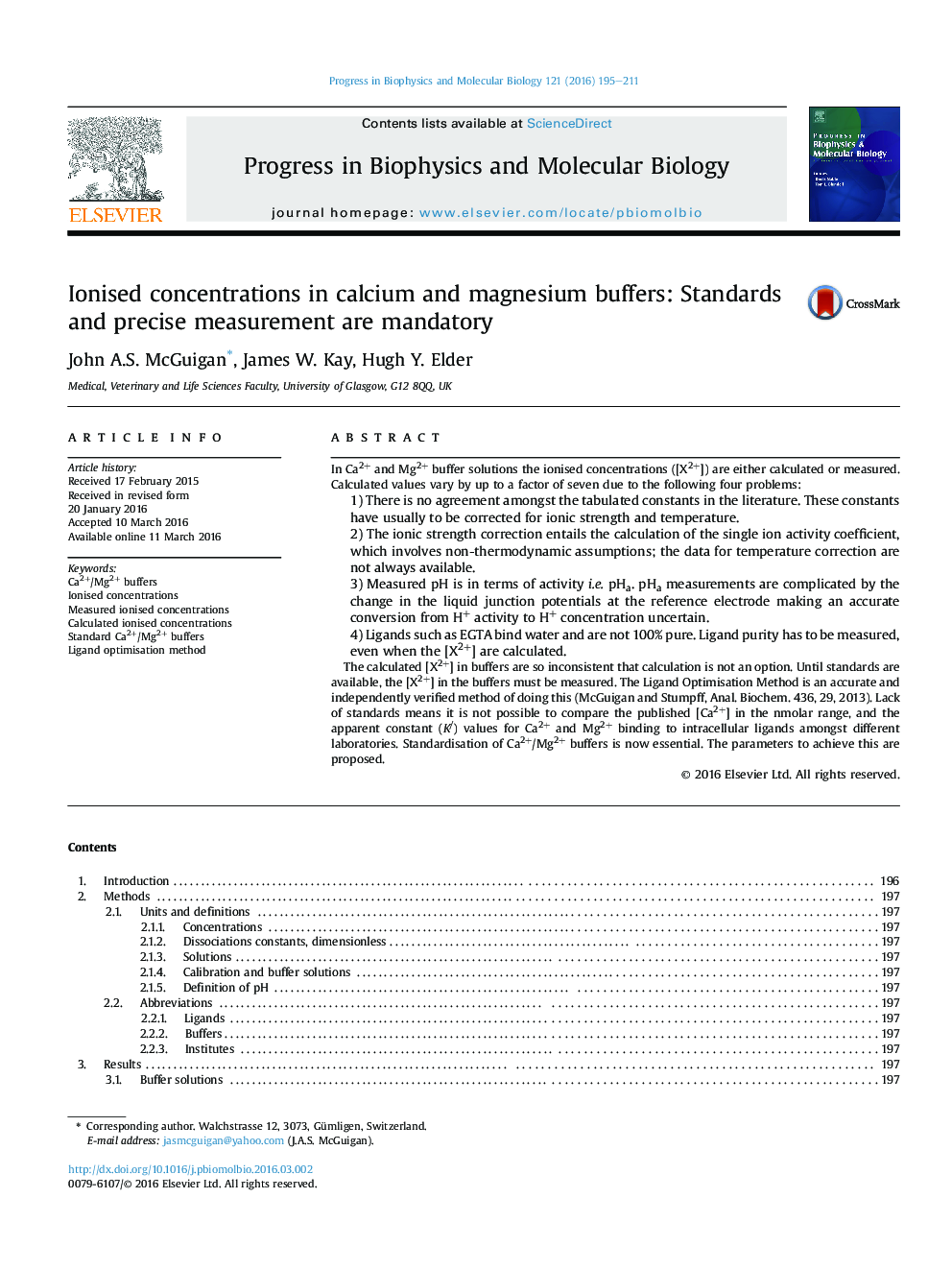| کد مقاله | کد نشریه | سال انتشار | مقاله انگلیسی | نسخه تمام متن |
|---|---|---|---|---|
| 5519936 | 1401166 | 2016 | 17 صفحه PDF | دانلود رایگان |
In Ca2+ and Mg2+ buffer solutions the ionised concentrations ([X2+]) are either calculated or measured. Calculated values vary by up to a factor of seven due to the following four problems:1) There is no agreement amongst the tabulated constants in the literature. These constants have usually to be corrected for ionic strength and temperature.2) The ionic strength correction entails the calculation of the single ion activity coefficient, which involves non-thermodynamic assumptions; the data for temperature correction are not always available.3) Measured pH is in terms of activity i.e. pHa. pHa measurements are complicated by the change in the liquid junction potentials at the reference electrode making an accurate conversion from H+ activity to H+ concentration uncertain.4) Ligands such as EGTA bind water and are not 100% pure. Ligand purity has to be measured, even when the [X2+] are calculated.The calculated [X2+] in buffers are so inconsistent that calculation is not an option. Until standards are available, the [X2+] in the buffers must be measured. The Ligand Optimisation Method is an accurate and independently verified method of doing this (McGuigan and Stumpff, Anal. Biochem. 436, 29, 2013). Lack of standards means it is not possible to compare the published [Ca2+] in the nmolar range, and the apparent constant (K/) values for Ca2+ and Mg2+ binding to intracellular ligands amongst different laboratories. Standardisation of Ca2+/Mg2+ buffers is now essential. The parameters to achieve this are proposed.
Journal: Progress in Biophysics and Molecular Biology - Volume 121, Issue 3, September 2016, Pages 195–211
